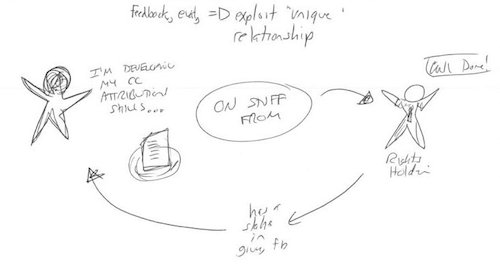System Structure
Centralized vs distributed
Alan Levine's ideas for the Creative Commons Certification project meeting
Github cogdog.github.io/ccc-map/
Da Vinci flying machine sketch: Wikimedia Commons public domain image
Sketched notes and references

For possible peer / external review CC has a unique situation where a rights holder has a stake in caring about the way certification applicants are performing.

"Picking features and functions from across these examples, and/or defining new features/functions you think are better, create an overall design for CC’s certificate program."

Notes stored in a "Wikity Federated Wordpress" (via Mike Caulfield, http://wikity.cc), a series of cards of one idea per card.